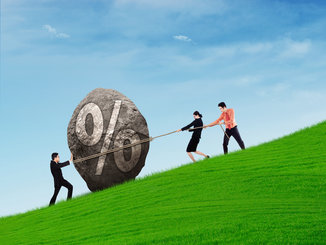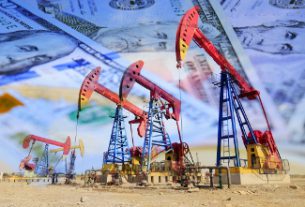Most mainstream economic commentary focuses on large headline numbers like the level of the Dow Jones and S&P 500, on the number of jobs created, or on the unemployment rate. But far more important numbers are often ignored – interest rates. Very few people understand the concept of interest, or the importance of interest rates to the functioning of the economy.
With the Federal Reserve having manipulated interest rates for so long, many people think of interest rates as something that central banks can adjust as needed to heat up or cool down the economy. They fail to understand that interest rates are a price, and that arbitrarily trying to fix that price can have severe effects on the health of the economy.
The Long-Term Bond Bubble
Interest rates throughout the economy have seen a long-term decline since the early 1980s. Successive Federal Reserve-created boom and bust cycles have been “fixed” by the Fed through continuously lowering the federal funds rate, which influences interest rates throughout the economy. But with interest rates having been at historically low levels for the past decade, they can’t realistically go much lower.
While some central bankers think that negative interests are a viable solution, the cost that imposes on depositors and savers means that they would eventually pull their money out of banks and collapse the banking system. That means that interest rates will only get higher in the future.
No One Remembers High Interest Rates
Interest rates have been manipulated for so long that no one remembers what it was like to have market-determined interest rates. Nor does anyone remember what it was like to have high interest rates. It has been nearly 40 years since interest rates last spiked into double digits, with the prime rate eventually peaking at over 20 percent in 1981.
Most of the bond traders and financial advisors who were in business back then have long since retired. Does your financial advisor know how to react if interest rates were to spike to 6, 8, or 10 percent or higher? Do you have a plan for what to do when interest rates start to increase? Higher interest rates will ravage bond investors and spook stock markets.
The Impact of Interest Rates on Gold
When interest rates saw their last spike in the early 1980s, the price of gold skyrocketed. It set all-time highs of around $850. While that price has since been surpassed and may not seem that great today, adjusted for inflation that’s over $2,700 in current dollars, or double what gold is currently trading at. If interest rates were to rise in the next few years back to a prime rate of 8-10 percent or more, gold would undoubtedly increase in price. The higher interest rates go, the greater gold’s price will likely be.
It’s only a matter of when, not if, interest rates will rise back to more normal levels. The Fed can’t keep markets in check forever. Investors who continue to remain heavily invested in stocks and bonds are playing with fire, betting that they can get out of the market before things get too bad. That could prove fatal to their retirement funds. But investors who see the writing on the wall and invest in gold will position themselves well to protect against future interest rate increases.
This article was originally posted on Goldco.




